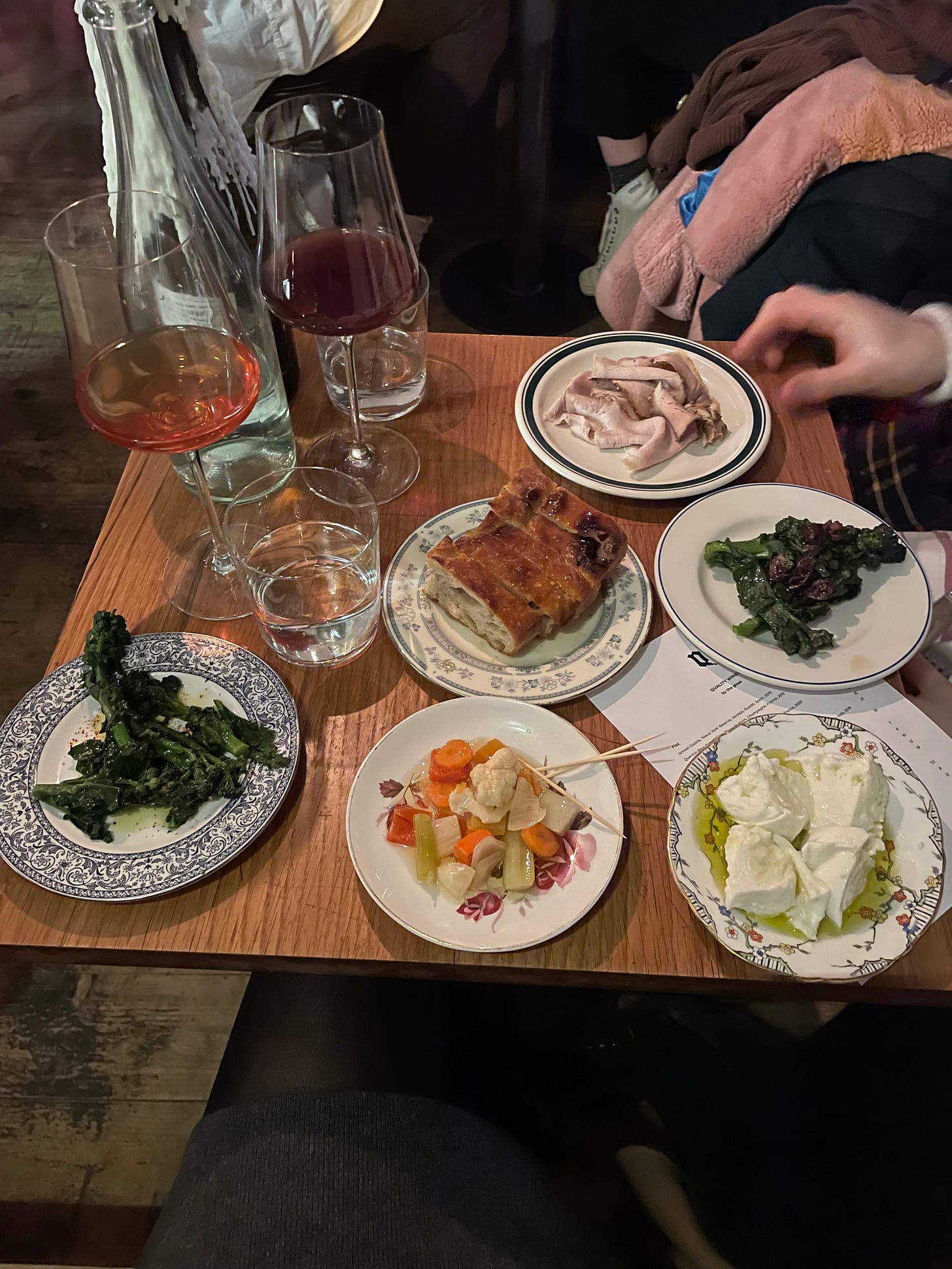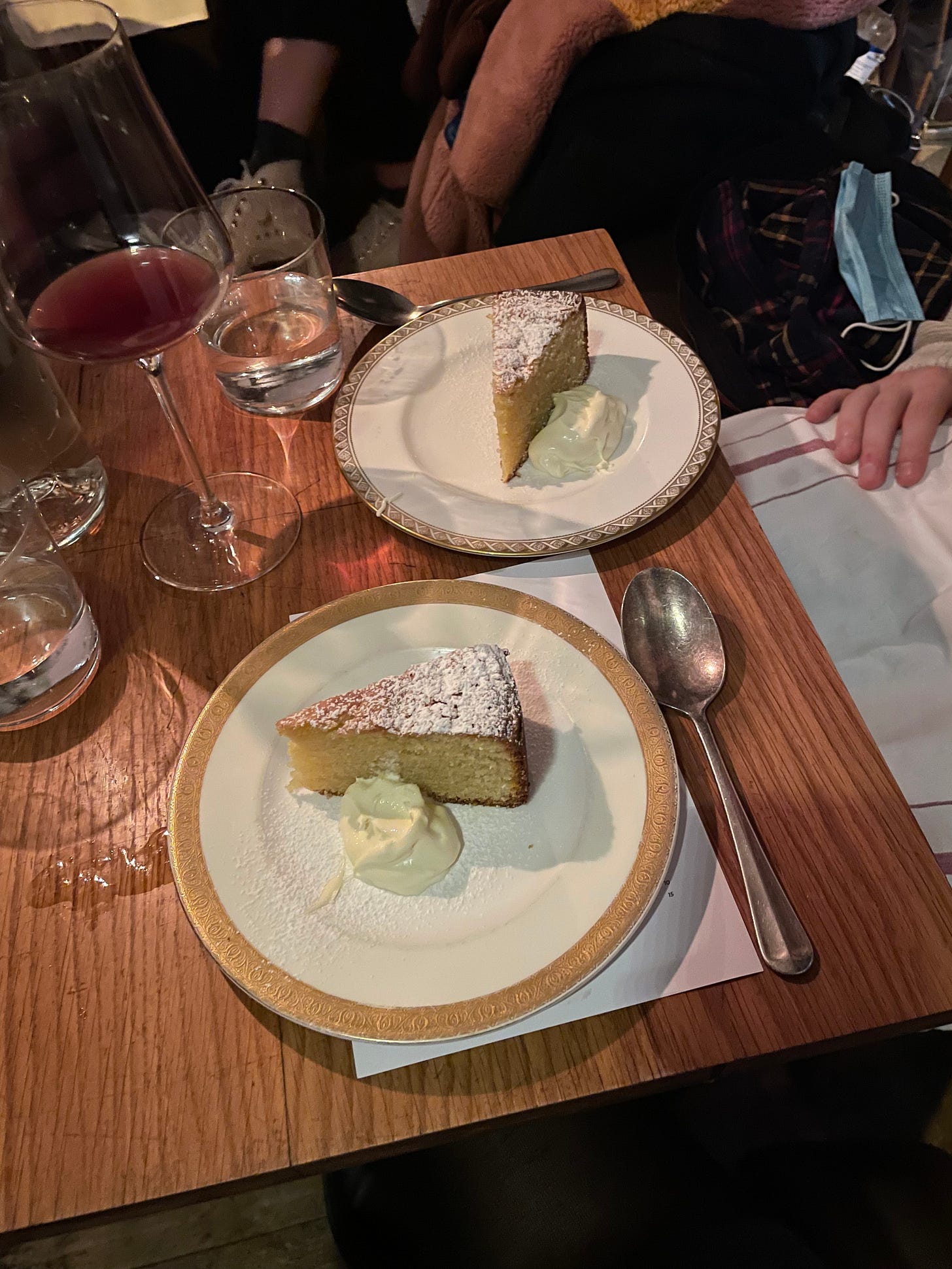For the past few years, my Instagram bio has read: “Grocery store enthusiast.” I have a funny memory from a few years ago of my new flatmates and I as we ventured to a Sainsbury’s on Cromwell Road in London. It was only our first or second day in England, and we entered the supermarket with a fawnlike wariness that, in retrospect, was hilarious. We marveled over the different selections of cheeses and snack foods, got lost trying to locate the frozen pizza, and ambled through each and every aisle, while in the meantime everyone else around us was, like, just trying to get ingredients for dinner and get the hell out. It's amusing to me because we were Western English-speakers in a supermarket in a Western, English-speaking country that in so many ways was not dissimilar from our own grocery stores. And yet, part of me still understands my younger self and her sense of awe under the florescent lights in the canned goods aisle.
When traveling, grocery stores have this powerful duality: on one hand, they are anchors, a sure thing you can count on in a foreign place, even if the particulars are different. On the other hand, they are doors to discovery, opportunities to glimpse into diets and lives different from your own. On our two-week European escapade, Haley and I became quickly familiar with the supermarkets and corner shops of Amsterdam, Paris, and Barcelona, relying on them for the cheap meals our budgets afforded us. There were learning curves—one time, we thought we had bought something like a gnocchi ready meal, only to realize it was in fact a pack of peeled garlic cloves. Another, we were gently chastised in French for not weighing produce before checking out. There were also joys, like eating store-bought pasta salad and falafel on a warm, dusky evening alongside Amsterdam’s canals, and procuring fresh fruit from a tiny shop just off a busy Barcelona street.
While browsing through seemingly endless amounts of pickled and fermented foods in a mini mart in Prague and inspecting the wide array of Bonne Maman jams in Bordeaux (there are so many!) reveal much about a place, the inverse dynamic does as well. Specialty and foreign food stores act as a “portal,” as Jenny Linford says her Vittles interview with Jonathan Nunn. These types of shops offer more than just food to their customers—they offer the preservation of home. I am reminded of Michelle Zauner and her wonderful essay-turned-book, Crying in H Mart, a beautiful tribute to her late mother and the Korean food of her youth. For immigrants, they give “a welcome link with not just the foods, but also the memories and traditions of their own cultures,” writes Huw Lemmey. While studying in London, I serendipitously lived near a shop that had a huge selection of products catering to Americans. I can’t remember whether the occasion was celebratory or sorrowful, the mood light or heavy, all I know was that on one cloudy spring day a box of Kraft mac and cheese was just the thing my friend Ellie needed. A small, cheesy bit of familiarity. Closer to home, my dad always seeks out Mexican grocers for fresh tortillas and salsas so spicy they’re almost inedible. They are a necessary addition to his weekly grocery haul.
These food shops also “have provided a much-needed connection to a wider selection of food cultures” especially to people like me in the United States or United Kingdom. Haley and I have both written about United Noodles, the largest Asian grocery store in Minnesota, and our appreciation of their wide selection of produce, dry goods, and snacks from East and Southeast Asia. More recently, my family and I stopped by Polish delis on Chicago’s North Side, bustling and crowded in the days leading up to Christmas. My eyes lit up when I saw the waist-high barrels filled with sauerkraut and dill pickles, all made on site.
Then, of course, there are local or chain grocery stores. In Minneapolis, we have Lunds & Byerlys, Cub, and Kowalskis alongside the national favorites, like Target, Whole Foods, and Trader Joes. For Eater, Jaya Saxena enquires about our loyalties to these stores, and what they reveal about us as consumers. Sure, it might have to do with produce quality and the breadth of brand names, but more than that, it’s a desire to communicate something: “We want our tastes and choices to say more about us, to project a core truth about ourselves to anyone who cares to look.” In the UK, where class anxieties run deep, the decision between Waitrose, Tesco, and Aldi is fraught with implications about socioeconomic status.
I think these layers of meaning are what inform my love for grocery stores. It’s not as simple as where you get your food for the week—these are sites of community and exchange, a place to find comfort and surprises. They reveal the truths of a place, who lives there and what they need to survive. Food, after all, is life-sustaining, but so is culture and tradition. In recent weeks and months, they have also revealed labor issues and cracks in infrastructure, though they have been a long time in the making. It’s fascinating that all these things are negotiated in one place—class, ethnicity, ethics, identity. At some point tomorrow, I’ll probably dash in and out of the Waitrose on the high street, just like the people surrounding me during my first Sainsbury’s trip. But today, I’m going to linger in my sentimentality and be grateful for all that these “portals” can give and teach me.
Surprises! I managed to surprise Ben for his birthday by coming to London to celebrate with him. I had a Delta voucher on the verge of expiring and it was Ben’s 30th (shhh don’t tell anyone!!!), so it all felt right. Luckily, I managed to keep it a secret for weeks with the help of his friends and family. We went to Quality Wines and had the most delightful prix fixe meal—the mushrooms, chickpeas and polenta had me muttering “Oh my god” every other bite. Then, we were joined by a few of Ben’s lovely friends at The Horseshoe Inn. A very fun and chaotic day!
I’m only halfway through, but I’ve been completely enthralled by Luster by Raven Leilani. I never know where it’s going to take me next.
Some new tunes that I desperately needed to liven up my listening habits: “Chocolate” by Khruangbin and Leon Bridges, “Curious” by Franz Ferdinand, and “Favorite” from Ru AREYOU featuring Duckwrth.
Really enjoyed catching up on Vittles while writing this little essay—I’ve linked them in the text above but this interview with Jenny Linford about the history of food shops in London and this essay about the concept of the English food store penned by Huw Lemmey were really great reads. The latter especially is something I’ve thought about a lot after visiting the infamous Costa del Sol, where English pensioners flock to for holidays. Initially when I visited, I think I was disappointed to find whole towns catering to the preferences of English people, especially given a larger context of British colonialism. This piece complicated that for me, though, and has given me a lot to think about, especially in regards to how class plays into these dynamics.
Also very much enjoyed “The Girlboss and Anti-Woke Cool Girl” by Jamie Hood. If you liked Haley’s essay last week, this has a ton of overlap and is the perfect companion. “If everything is to be performed beneath a shroud of dull irony to an inchoate and hostile digital public, why bother imagining futurity at all?”
Finally, if anyone has watched The Green Knight, I would love to discuss it with you. It was a visual treat (yes, even beyond Dev Patel’s looks) but I feel like I need to unpack it further.












